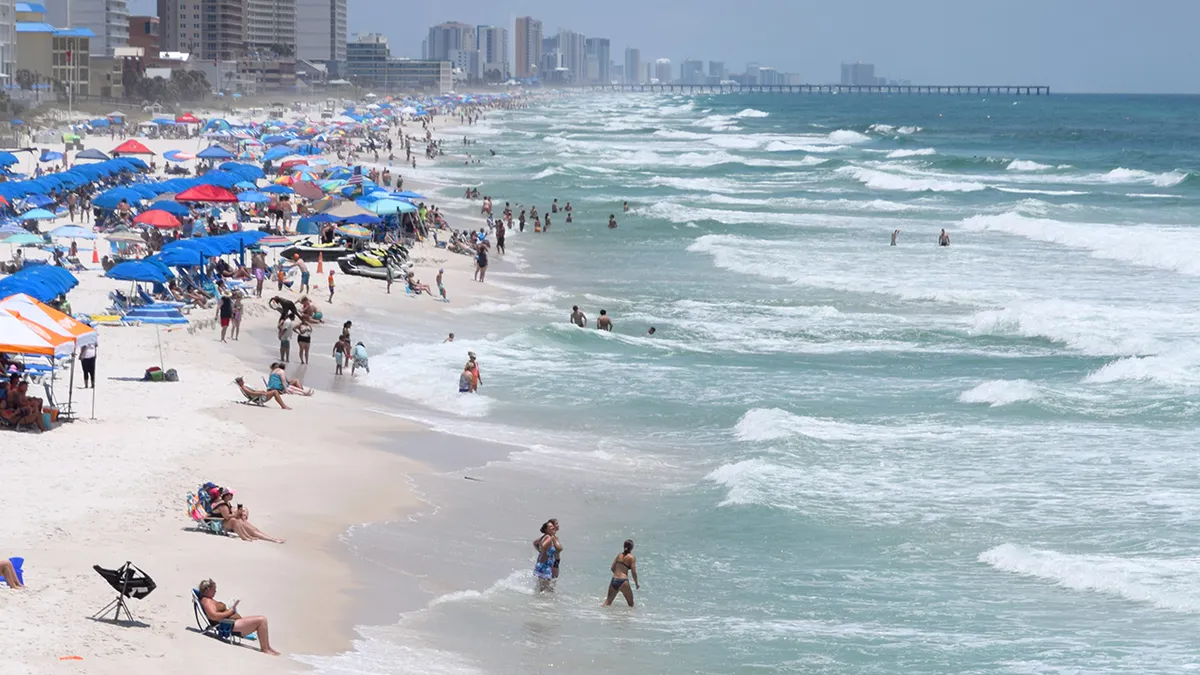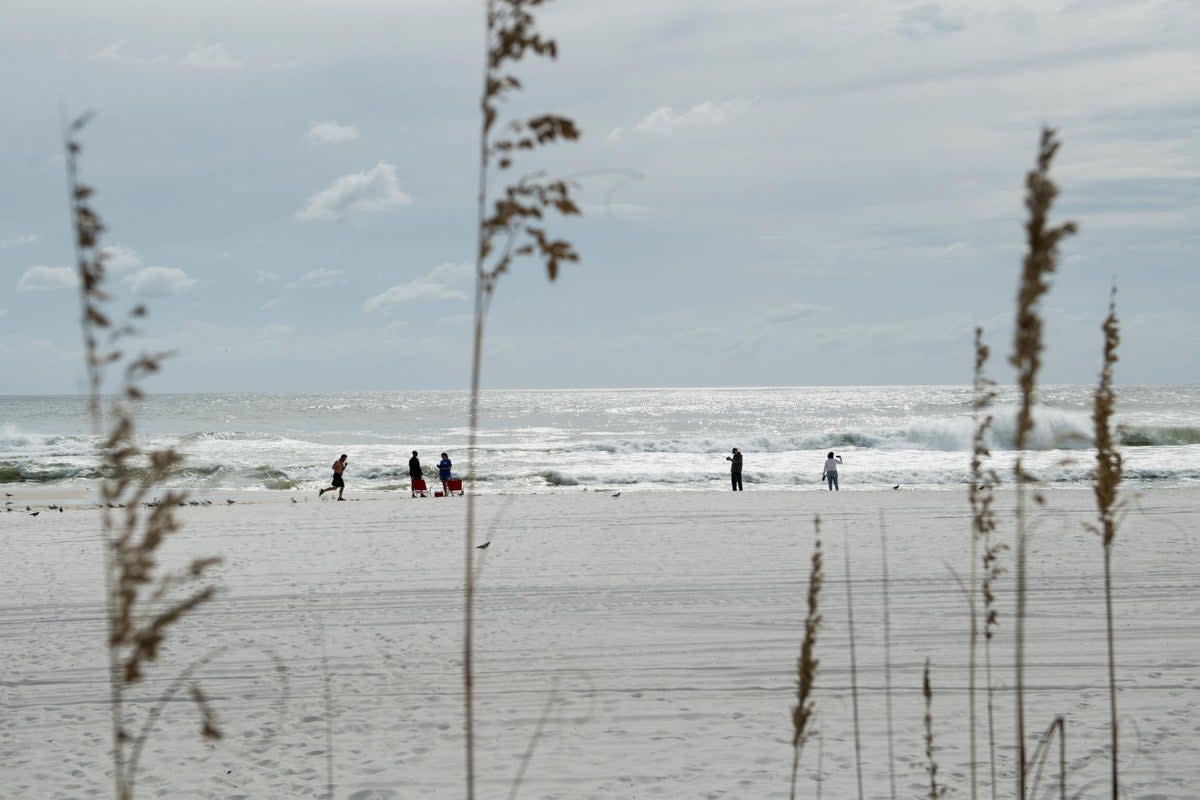Rip Current Formation and Behavior: Panama City Beach Rip Current

Panama city beach rip current – Rip currents are powerful, narrow channels of fast-moving water that flow away from the shore, often through breaks in the sandbar. They can occur at any beach, but are most common on beaches with a sloping underwater topography and strong waves.
Panama City Beach’s notorious rip currents have once again claimed a life, as a swimmer was tragically lost yesterday. These powerful, invisible currents can swiftly pull even experienced swimmers out to sea, making it crucial for beachgoers to be aware of the risks and take precautions.
Dynamics and Mechanisms
Rip currents are formed when waves break near the shore and the water rushes back towards the sea. Some of this water is pushed back out to sea by the force of the waves, while some of it is pulled back towards the shore by the undertow. The water that is pulled back towards the shore is what creates the rip current.
The rip currents of Panama City Beach are treacherous, pulling swimmers out to sea with relentless force. But like the Angels and Brewers locked in a fierce battle on the baseball diamond, these currents can also be outmaneuvered. With careful planning and a keen eye, swimmers can avoid their grasp and return to shore safely.
Angels vs Brewers is a testament to the power of strategy and determination, qualities that can serve us well both in the realm of sports and in the face of nature’s challenges.
The strength of a rip current depends on a number of factors, including the size of the waves, the slope of the underwater topography, and the amount of water that is being pulled back towards the shore. Rip currents can be very strong, and they can quickly pull swimmers out to sea.
The relentless rip currents of Panama City Beach can be as unpredictable as the outcome of a thrilling royals vs athletics prediction. Just as the Royals and Athletics vie for victory, the ocean’s treacherous currents can swiftly turn a day of sun and sand into a perilous struggle.
Characteristics and Appearance
Rip currents are typically narrow, ranging in width from a few feet to several hundred feet. They can be difficult to spot, as they often have no visible surface features. However, there are a few signs that can indicate the presence of a rip current, including:
- A break in the line of waves
- A choppy, turbulent area of water
- A current that is moving faster than the surrounding water
Factors Influencing Strength, Size, and Duration
The strength, size, and duration of rip currents can be influenced by a number of factors, including:
- Wave height: Larger waves create stronger rip currents.
- Beach slope: Steeper beaches create stronger rip currents.
- Tides: Rip currents are often stronger during high tide.
- Wind: Strong winds can create stronger rip currents.
Rip Current Hazards and Safety

Rip currents are powerful, narrow channels of fast-moving water that can pull swimmers away from the shore. They are often difficult to see and can be extremely dangerous, even for experienced swimmers. The dangers of rip currents include:
- Drowning: Rip currents can quickly pull swimmers away from the shore, making it difficult for them to swim back.
- Exhaustion: Swimming against a rip current can be exhausting, even for strong swimmers.
- Hypothermia: Rip currents can pull swimmers into cold water, which can lead to hypothermia.
- Panic: The suddenness and power of a rip current can cause swimmers to panic, which can make it difficult for them to think clearly and respond appropriately.
To avoid rip currents, swimmers should be aware of the signs of a rip current, which include:
- A break in the line of waves
- A choppy, turbulent area of water
- A current that is moving faster than the surrounding water
- A current that is pulling away from the shore
If you are caught in a rip current, do not panic. Stay calm and follow these steps:
- Swim parallel to the shore: Do not try to swim directly back to shore. Instead, swim parallel to the shore until you are out of the rip current.
- Once you are out of the rip current, swim back to shore: Once you are out of the rip current, you can swim back to shore.
- If you are unable to swim out of the rip current, call for help: If you are unable to swim out of the rip current, call for help. A lifeguard or other rescuer will be able to help you.
Rip currents are a serious hazard, but they can be avoided by being aware of the signs and knowing what to do if you are caught in one.
Mitigation and Prevention Strategies
Mitigating rip current hazards requires a multi-pronged approach involving lifeguards, beach patrols, local authorities, technological advancements, and public education. Collaboration among these stakeholders is crucial to ensure effective prevention and response.
Lifeguards and Beach Patrols, Panama city beach rip current
Lifeguards and beach patrols play a vital role in rip current mitigation through:
- Regular beach surveillance and monitoring
- Warning flags and signage to indicate rip current areas
- Rescue operations and assistance to swimmers caught in rip currents
- First aid and medical attention for victims
Technological Advancements
Technological advancements have enhanced rip current detection and forecasting capabilities, including:
- High-resolution cameras: Monitor beach conditions and identify potential rip current formation
- Acoustic Doppler current profilers: Measure water velocity and direction to detect rip currents
- Numerical modeling: Simulate rip current behavior and predict their occurrence
Research Initiatives
Ongoing research initiatives focus on improving our understanding of rip current dynamics, including:
- Field studies: Collect data on rip current characteristics and behavior
- Laboratory experiments: Simulate rip currents to study their formation and evolution
- Numerical modeling: Develop models to predict rip current occurrence and intensity
Best Practices and Education
Raising awareness and promoting responsible beach behavior are essential for rip current prevention:
- Public education campaigns: Inform beachgoers about rip current hazards and safety measures
- Swim near lifeguarded beaches: Lifeguards are trained to recognize and respond to rip currents
- Learn how to escape a rip current: Swim parallel to the shore until you escape the current’s pull
- Avoid swimming alone: Always have a buddy when swimming in the ocean
The relentless rip currents of Panama City Beach can be as unforgiving as the unforgiving nature of a baseball rivalry, like the Dodgers vs Rockies showdown. Just as the thrill of the game can quickly turn into a test of endurance, the deceptively calm waters can suddenly surge into a deadly force, a reminder that even the most alluring of environments can conceal hidden dangers.
Panama City Beach’s treacherous rip currents have claimed another life, a grim reminder of the dangers that lurk beneath the seemingly serene waters. Yesterday’s tragedy, a heart-wrenching loss , serves as a chilling testament to the unforgiving nature of these currents.
Yet, as the sun sets on another day, the allure of Panama City Beach remains, its hypnotic beauty concealing the hidden peril that lurks just offshore.
